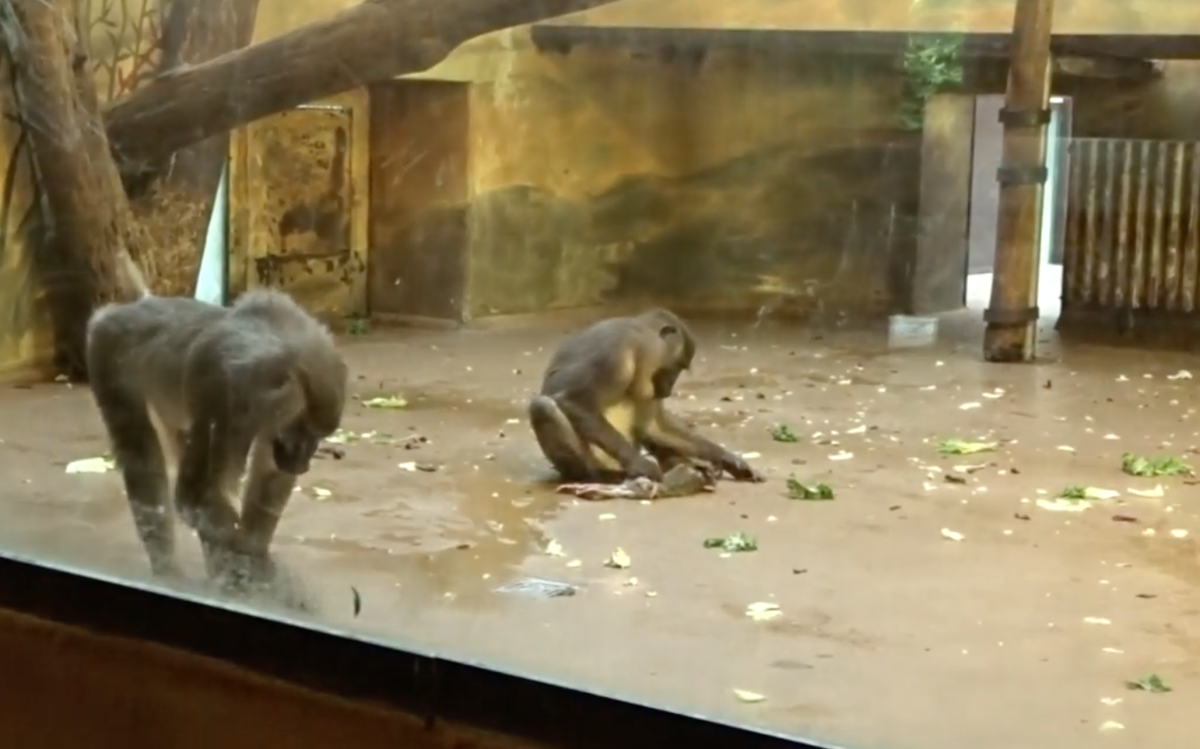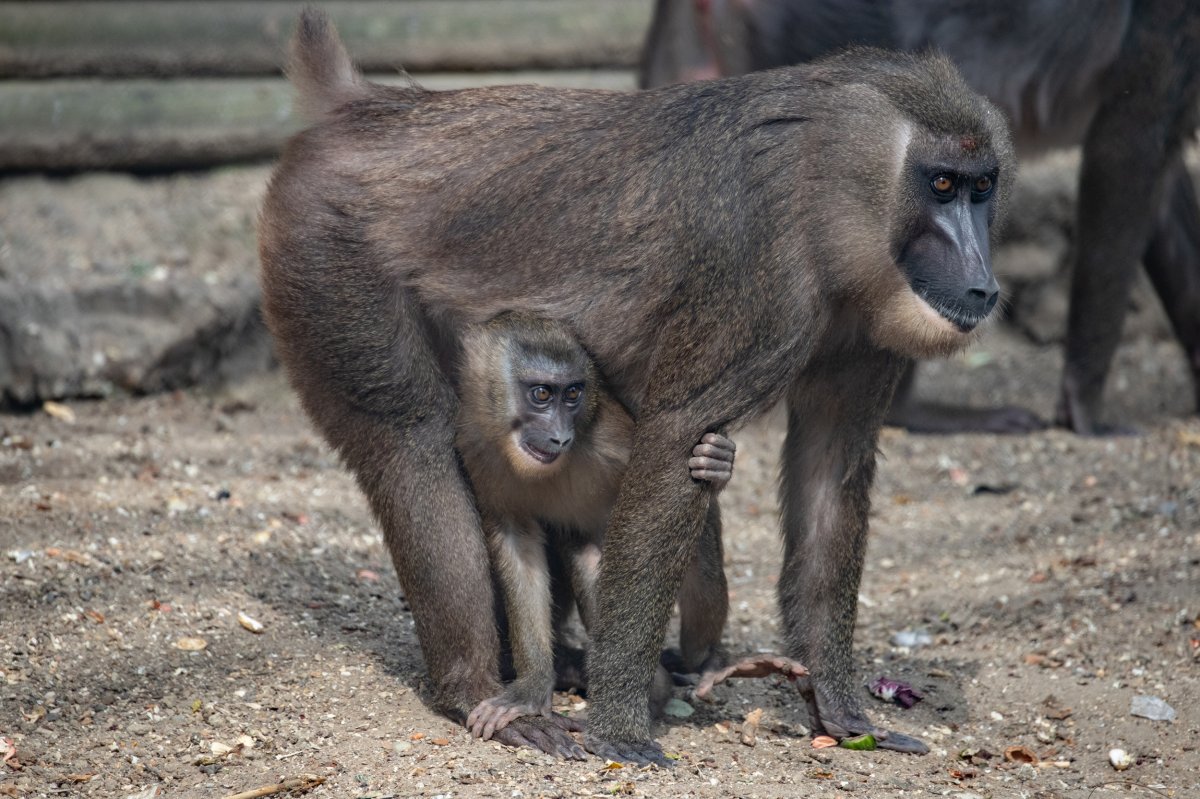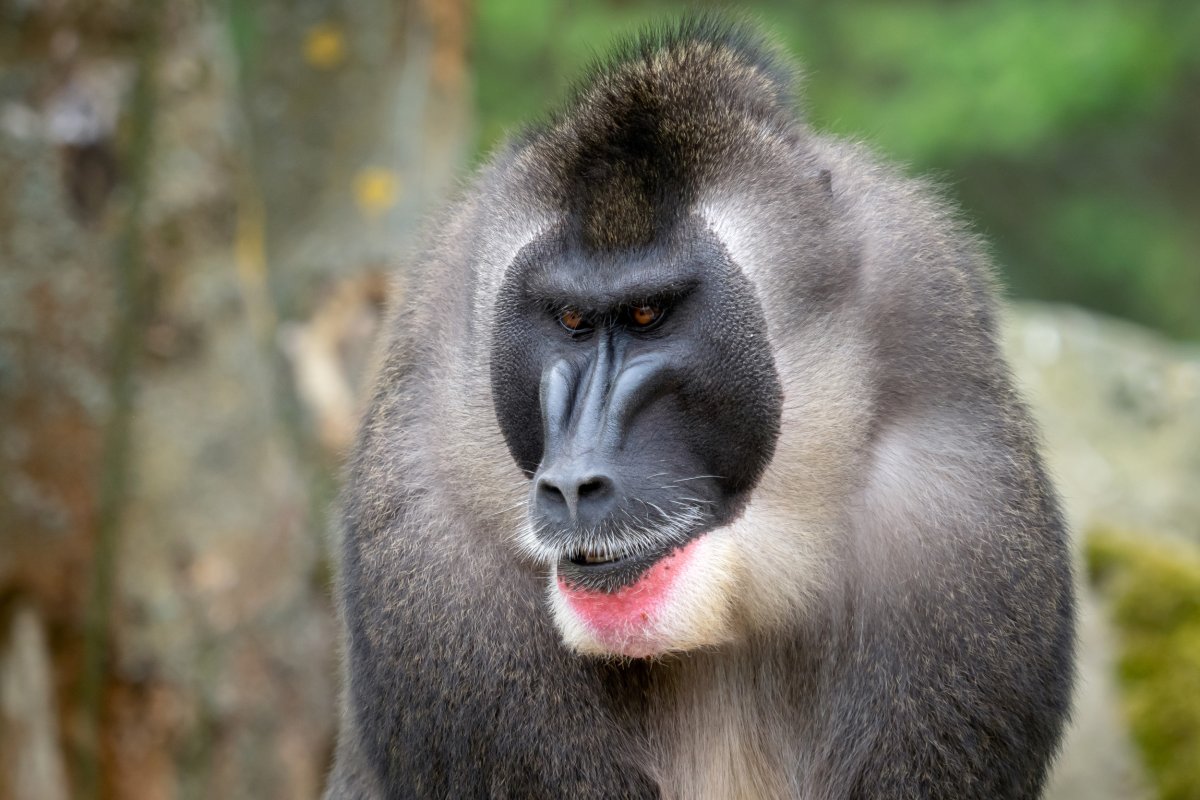A female monkey in a zoo in Europe ate her baby days after it died, having carried the corpse around near-constantly.
This bizarre event occurred at the Dvůr Králové safari park in Czechia, after female drill Kumasi gave birth to a son in August 2020.
The unfortunate infant died only 8 days after birth, after which Kumasi carried his body around with her for two whole days, grooming it as she went, a paper in the journal Primates revealed on June 27. Kumasi then began to eat the body, consuming the majority of the corpse before keepers removed the remains.

"The mother maintained high levels of grooming after the infant's death. Both the mother and other group members interacted with the dead baby by trying to engage its gaze. Two days after the death, the mother started to eat the corpse until it was almost completely consumed; there was no sharing with other group members," the authors wrote in the paper.
"This is the first report of post-mortem carrying and cannibalism of an infant in a captive group of drills," the scientist added.
Drills, or Mandrillus leucophaeus, are close relatives of mandrills and baboons native to Central Africa. They live in large social groups, of up to 100 individuals, led by a dominant male that fathers the majority of the young. Drills are listed as "endangered" by the IUCN Red List, and are considered some of the highest conservation priority of all African primates, with only around 4,000 specimens left in the wild.

The paper describes how, after her baby died, Kumasi tried to put her face to its eyeline, as if to catch its gaze.
"Monkeys and apes often inspect the face of their dead babies like this, possibly to perceive the eye movements," study co-author Elisabetta Palagi, a primate biologist at the University of Pisa in Italy, told LiveScience. "When the mothers do not receive any feedback from the baby, it probably means that something is going wrong."
Kumasi then began throwing the body around the enclosure, before eating the corpse. This, while horrific to humans, may actually be an evolutionary advantage.
"If we consider the incredible reproductive energy investment of primate mothers, cannibalism can be considered an adaptive evolutionary trait that helps the mother to recover energy after gestation," Palagi said. This could increase her chances of reproductive success in the future, she added.
"The fact that the mother did not share the carcass with other group members supports the hypothesis of the nutritional benefit of cannibalism," Palagi said.

Other species that eat their own young include hippos and hamsters, both of which have been seen to do so in periods of nutritional stress and starvation.
This cannibalism has happened with primates before: a female white-faced capuchin was seen eating an infant in 2019 in Costa Rica, Central America, according to a study in the journal Ecology and Evolution. However, this was not her own infant, and she gave birth two weeks later. This meant that the corpse-eating had been to gain more nutrients for the sake of her newborn. And some male chimpanzees and lions have been observed eating babies born from other males.
In the case of the drill, the young age of the infant may have contributed to the mother's urge to eat her own baby.
"The younger the baby, the less likely the mother-infant attachment has become sufficiently strong to prevent maternal cannibalism on the dead infant," Palagi said.
This is the first time that this carrying behavior has been observed in drills, but other species of primate have also been seen to move around their dead young after death. One study published in the journal Primates in February described how a capuchin monkey mother carried the body of her disabled child for hours after it died.
Do you have a tip on a science story that Newsweek should be covering? Do you have a question about cannibalism? Let us know via science@newsweek.com.
Uncommon Knowledge
Newsweek is committed to challenging conventional wisdom and finding connections in the search for common ground.
Newsweek is committed to challenging conventional wisdom and finding connections in the search for common ground.
About the writer
Jess Thomson is a Newsweek Science Reporter based in London UK. Her focus is reporting on science, technology and healthcare. ... Read more
To read how Newsweek uses AI as a newsroom tool, Click here.






